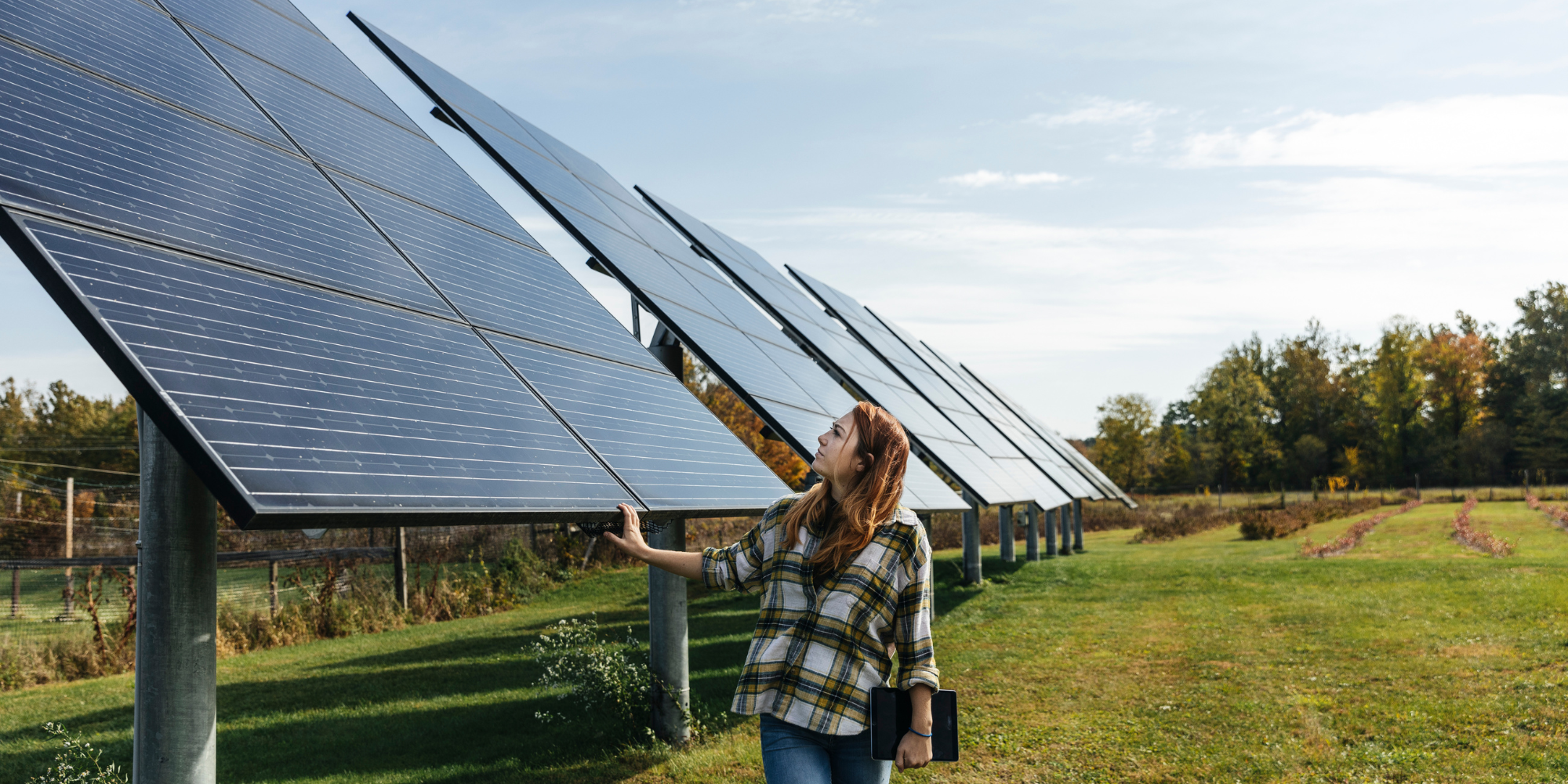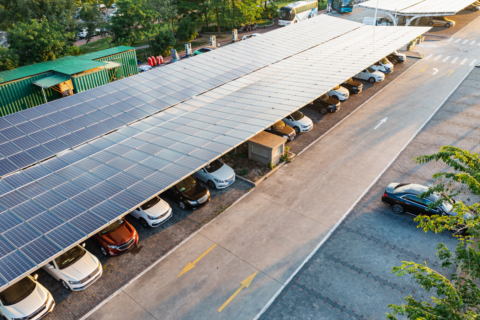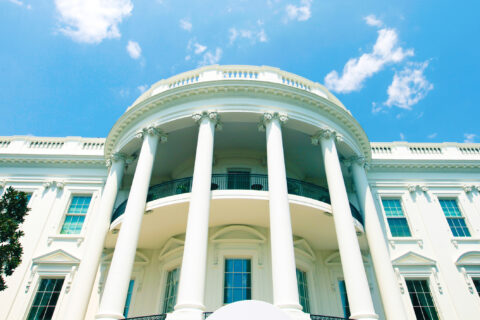The Inflation Reduction Act (IRA) provides a variety of incentives for clean energy. Many of these tax credits and rebates are aimed at individuals and households to transform their energy use and consumption – from home energy efficiency improvements to rooftop solar and electric vehicles. Local leaders have an important role to play in helping their residents understand and take advantage of these opportunities.
For the first time, however, local governments are positioned to take advantage of these tax credits directly. The IRA includes a provision that provides non-taxable entities investing in and producing clean energy with a direct payment option in lieu of tax credits. This provision is applicable for tax years starting after December 31, 2022 and ending before January 1, 2033. A project that is under construction now could potentially qualify.
What is Direct Pay?
Under the IRA, direct pay applies to states, cities and local municipalities, tribes and other tax-exempt entities, such as municipal water or power utilities and school districts. For city leaders, direct pay is an option for funding city-owned clean energy projects that will make projects more affordable for local governments and level the playing field between local governments and the private sector, which has traditionally benefited from tax credits.
Of particular note for local governments, in order to claim the full direct pay amount, projects must meet the prevailing wage and apprenticeship requirements. The U.S. Department of the Treasury recently released guidance on these key labor provisions under the IRA.
Additionally, there are specific criteria that when met will boost the value of the direct payment. For example, this includes projects with sufficient domestic content, projects that are located in “energy communities” (which include sites with brownfield properties, high unemployment or a closed coal mine or coal plant), projects in low-income communities, and rooftop solar projects on affordable housing. These opportunities can provide a 10-30% increase in the value of the direct payment depending on the criteria.
Importantly, as cities, towns and villages look to take advantage of the grant funding provided under the Bipartisan Infrastructure Law and IRA, there is no prohibition on using direct pay and federal or state grant money for the same project.
What Programs are Eligible for Direct Pay?
Tax exempt entities, including state and local governments, can take advantage of the direct pay option under a variety of tax credits for both the production of and investment in clean energy. The Production Tax Credit (PTC) provides an ongoing tax credit for the first ten years of a project based on the amount of renewable energy produced in each year and sold to an unrelated person. The Investment Tax Credit (ITC) are one-time tax credits based on a percentage of the qualifying costs of a project.
The IRA includes the following new and expanded tax credits that are eligible for the direct pay option:
Production Tax Credits
- Renewable Electricity Production Tax Credit (Section 45)
- Carbon Capture and Sequestration Tax Credit (45Q)
- Nuclear Power Production Tax Credit (45U) – New
- Clean Hydrogen Production Tax Credit (45V) – New
- Advanced Manufacturing Production Tax Credit (45X) – New
- Clean Electricity Production Tax Credit (45Y) – New
- Clean Fuel Production Credit (45Z) – New
Investment Tax Credits
- Energy Investment Tax Credit (Section 48)
- Advanced Energy Project Credit (48C)
- Clean Electricity Investment Tax Credit (48E) – New
- Commercial Clean Vehicle Credit (45W) – New
- Alternative Fuel Refueling Property Credit (30C)
This blog provides more details on each of these tax credits. The U.S. Department of the Treasury is currently developing guidance for implementing each of these tax credits and the process for local governments to receive the direct payment in lieu of tax credit. The guidance is expected to be finalized over the next year.
Clean Energy Projects for Local Governments
The climate and clean energy provisions in the IRA will incentivize a large shift toward clean energy and reducing greenhouse gas emissions. Here are three local examples from municipal water and power utilities undertaking clean energy projects that are likely eligible for tax exempt entities to take advantage of the direct pay option.
Santa Rosa, CA
Santa Rosa owns and operates a municipal water utility for sewer and drinking water. This includes wastewater treatment for the city and neighboring communities. They use over 98% of their recycled water for geothermal energy and agriculture irrigation. Santa Rosa plans to install floating solar on the recycled water ponds at their wastewater facility – with the intention to install enough PV to fully offset the energy demand of the treatment plant. This type of project is eligible for direct pay, potentially through either the ITC or PTC.
They will also try to take advantage of IRA direct pay programs for their water utility other ways. One, expand their cogeneration project – increase capacity and efficiency of their gas digester plant. Two, expand the recycled water pipeline to the geothermal energy plant, increasing energy production.
Athens, OH
The City of Athens is also looking to decrease energy usage for water treatment facilities and other municipal buildings. They decided to start with their wastewater treatment facility, as it by far uses the most energy, leading to the largest monthly energy bills. They will install enough PV to fully power the wastewater treatment plant. While this project has been in the works for years and financed through a power-purchase agreement, they are looking to use this experience to replicate the project on other facilities and finance instead through a local carbon tax leveed to cover the capital investment costs, and recover a portion of this investment through direct pay claims (Section 48 ITC). Future plans include PV installations on City Hall, a parking garage, and on the old Athens Armory repurposed into a coworking space, all of which they are exploring different direct pay options through the IRA.
Madison, WI
Madison is planning to install PV on numerous municipally-owned buildings, including a fire station, police station, library and engineering service building. Solar installations are listed as eligible under the ITC and PTC, so are good options to explore to take advantage of direct pay tax incentives. Additionally, their engineering service building is combining a solar PV array with electric vehicle charging stations, which may make them eligible for more tax credits, such as the Alternative Fuel Refueling Property Credit. Madison is also combining workforce development into their upcoming projects, indicating that GreenPower trainees are to install the new panels, which should satisfy the prevailing wage and apprenticeship requirements to claim the full credit.
Learn More
- White House guidebook on IRA investments in clean energy and climate action
- White House consumer guide to tax credits and rebates, which local leaders can share with their residents
- NLC blog and webinar: Clean Energy Project Eligibility for Local Governments in the Inflation Reduction Act
Stay tuned to NLC’s website for more resources on the Inflation Reduction Act and how it will impact municipalities.
Stay Informed
Sign up for our Federal Advocacy Update Newsletter to stay up to date on the latest federal opportunities for your city, town or village.











